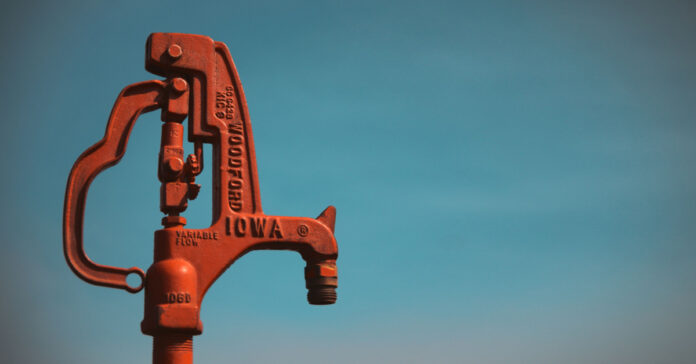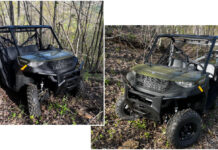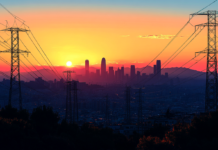This is the second article from Down Under Prepper, our guest author from Australia. If you have not done so, you can read his first installment on prepping in Australia.
Note: When the author refers to “local councils,” he is talking about local governments similar to a town or county government in the United States.
Water is Life, Not Just a Good Idea
The next thing I’m considering as a prepper is water, quality and quantity, how to get it to where it’s needed, and water system design strategies.
Obviously, rain water, if clean and allowed by local councils, the best choice, followed by spring water and water from a bore (well). Pumping water directly from a stream or river is another option.
Some local councils have regulations in relation to water harvesting, and if you are close to large scale farming, pesticides, farm chemicals, and dusts could be an issue with water purity. In any case, a water filter for drinking water is a good investment.
Be sure to separate water intended for drinking from water for watering gardens and other non-human uses, as the latter does not need purification. You do not want any cross contamination.
Having worked in local council as an engineer for many years, the amount of chemicals added to municipal water supplies is astounding, and not limited to chlorine. There are PH stabilizers, flocculants to settle dirt, and many other chemicals. You can avoid these by having your own water source.
Water System Design
Give some thought to how the water is to be moved around. If you are on the grid and rely on a pump, make sure you have some sort of backup pump. Better yet, operate on a header tank system that gives pressure through gravity only. We pump water to a 10,000 gallon header tank on a high spot, then gravity takes over to feed the house. This type of system gives some backup if the grid fails, but we also use it with our solar system.
Our system uses a relay that switches on the pump only after the solar system’s batteries are fully charged. This reduces the demand on the batteries by not requiring a pump to run after dark or on days without sun.
Hot Water
Hot water is another consideration. Solar with wood heater boost is ideal, but we have several systems here that also use an LP gas booster along with the solar. If you have enough solar electric power, you can consider boosting the hot water with the electric element on excess solar power, as we do. Be aware that a hot water element can draw up to 4kw, so a decent size inverter is needed.
Hot water elements with lower ratings are available to reduce the power input. The disadvantage with a 1.5 kw system is it will take much longer to heat the tank, but any hot water will be a bonus. Don’t forget a freeze protection valve in the solar heater panel to prevent damage from freezing.
Irrigation
Garden or crop water is the next thing. Pumping from a dam or river can use gravity or direct solar power, in which case and batteries are not required (if the correct control gear is used). There are many firms that specialize in that sort of gear. If you use solar power from your primary system, once again, you should arrange the solar power system to switch on a relay when the batteries are charged. Then it will use the “extra” power to run a 240 v pump on the dam and pump to another 10,000 gallon header tank, giving both gravity feed and backup water to your precious gardens and crops. It may also be helpful, especially in dry times, to flush toilets using dam water. This necessitates a dual water system, with one-way valves to prevent cross contamination of drinking water with dam/creek water.
How much power will a pump/tank system need?
The formula, at 100% efficiency, is:
P (Power) = 9.81 (acceleration due to gravity) X flow (liters/second) X head (In meters)
Interestingly, this formula also works backwards and can be used to calculate the power available for a hydro turbine, once again at 100% efficiency.
Fire Protection
A final consideration, especially down here, is bush fire protection. Roof sprinklers are a must on all sheds and houses, as is a high flow Honda fire pump, and a separate dedicated pipe system to feed it, buried underground for protection. An on-farm fire truck or trailer, with hoses and pump, is also a good idea, especially in bush fire prone areas, as Australia is.
Waste and Sewage
Along with water supply goes waste disposal. All our food wastes are either composted or fed to the pig.
For sewage, a septic system can manage both the toilet and sink/shower waters. They work well and are almost maintenance free, apart from brush-cutting the grass around the underground tanks every so often.
The other alternative is a composting toilet, and many designs exist on the net. They work well if properly installed. There are batch system that have a holder, usually a wheelie bin, and rota-loo, and fixed system as well. Keep a small bucket of sawdust adjacent to the toilet and a handful down there every so often keeps it sweet.
Wet waste from sinks etc. can be handled with an absorption trench, but the longer the better, within reason.
Cardboard and such wastes can also be composted, leaving only cans and plastic packaging to be dealt with. These can usually be recycled locally.
Additional comments from Pete: As long-term readers know, I have experienced frozen pipes in my gravity-fed water system because the pipes are not buried. To prevent freezing, water pipes should be buried below the frost line, and you should use frost-free hydrants outdoors. You may also need to bury your tank or at least bury a portion of it to keep the water in it from freezing.







